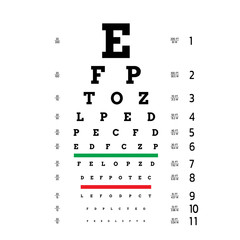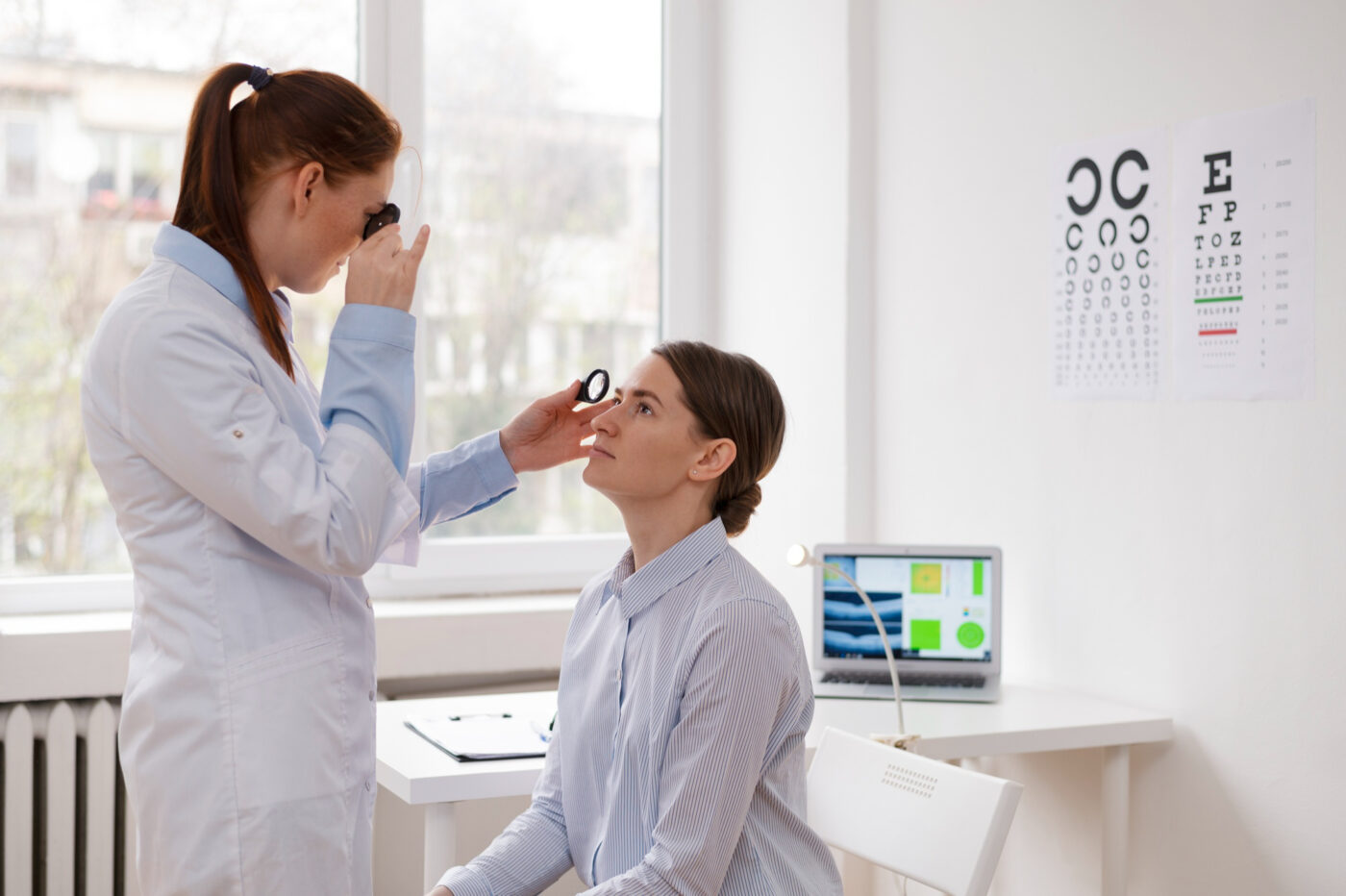Myopia, commonly known as nearsightedness, affects millions of individuals worldwide, impacting their ability to see distant objects clearly. This condition occurs when light entering the eye is not focused directly onto the retina but instead falls in front of it, resulting in blurred vision for distant objects. While myopia can develop at any age, it often emerges during childhood or adolescence and may progressively worsen over time.
Diagnosis
Diagnosing myopia typically involves a comprehensive eye examination conducted by an eye care specialist. The evaluation may include:
Visual Acuity Test
A visual acuity test assesses the sharpness of your vision at various distances using an eye chart. This helps determine the extent of myopia present.
Phoroptor Test
During this test, you’ll read an eye chart while looking through a device containing different lenses. This aids in determining the appropriate prescription for correcting vision problems.

Other Tests of Eye Health
Additional tests may be performed to assess pupil response to light, eye movement, peripheral vision, intraocular pressure, and the overall condition of the eye’s structures.
Exam of the Inner Eye
Using special equipment, such as a lens with a light, the eye care specialist examines the retina and optic nerve. Dilation drops may be used to provide a better view of the inner eye.
Myopia Treatment Options
Managing myopia involves improving vision clarity and monitoring for potential complications such as glaucoma, cataracts, and retinal detachment. Treatment options include:
Prescription Lenses
- Eyeglasses: These provide a simple and safe way to correct nearsightedness by compensating for the abnormal curvature of the cornea or the elongated shape of the eye.
- Contact Lenses: Placed directly on the cornea, contact lenses offer an alternative to glasses and may correct multiple refractive errors.
Refractive Surgery
- LASIK (Laser-Assisted In Situ Keratomileusis): This procedure involves reshaping the cornea using a laser to reduce dependence on corrective lenses.
- PRK (Photorefractive Keratectomy): Similar to LASIK, PRK reshapes the cornea’s surface but involves removing the epithelium before laser treatment.

Find a LASIK Surgery Location Near You
We’re located nationwide – it’s easy to find a LASIK Vision Center near you.
Treatments to Slow Progression of Myopia
Several approaches aim to slow the progression of myopia, particularly in children and adolescents until they are old enough for more permanent options.
- Atropine: Low-dose atropine eye drops may help reduce myopia progression.
- Increased Time Outdoors: Spending more time outdoors during childhood and adolescence may decrease the risk of developing myopia.
- Dual Focus Contact Lenses: These lenses have shown promise in slowing myopia progression.
- Orthokeratology: This therapy involves wearing rigid contact lenses at night to reshape the cornea temporarily.
Myopia management involves a range of treatment options tailored to individual needs. From prescription lenses to surgical interventions, advancements in eye care offer effective solutions for improving vision clarity and reducing dependency on corrective eyewear. With ongoing research into innovative therapies, the future holds promise for individuals seeking to address myopia and preserve their visual health.
Source:
Myopia. (n.d.). https://www.aoa.org/healthy-eyes/eye-and-vision-conditions/myopia?sso=y
Categories:



